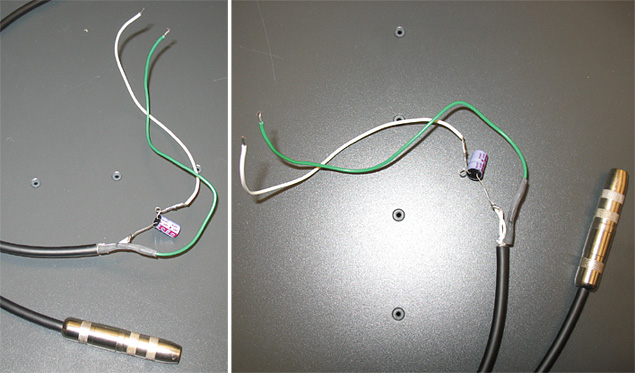Audio Troubleshooting: Some Tricks of the Trade

Here's some troubleshooting tricks of the trade—helpful hints that are easy to implement and easy on the budget, shared by your engineering colleagues.
CLEANING PATCHBAYS
One of the important functions of patchbays, or jackfields if you prefer, is to provide a mechanical backup to electronic based systems. But sometimes the patches get noisy, and have to be fixed.
While it may be tempting to reach for a can of spray cleaner to zap the jacks themselves, don't. Chances are the problem is with the patchcord. Mike Buchanan, vice president of Bittree, recommends cleaning patchcord connectors with denatured alcohol and don't use burnishing tools. "Keeping the patchcord clean is the most effective way to keep the jackfield lasting a long time," he said. If that doesn't work, quarantine those "dirty" patchords so they don't cause future problems.
Companies such as Bittree make self-cleaning jacks that are designed, as the name suggests, to "clean themselves with use," Buchanan said. "You're not going to clean better with a spray or exercise."
And you can actually make things worse by spraying. "It will attract dust and get crust on the signal contacts," Buchanan said.
While Jackfields are designed to battle dust and dirt, don't make their job harder than it has to be. Don't introduce patchbays into a dusty environment. Drywall dust, diesel fumes, welding and soldering all put contaminants into the air that will stick to patchbays, Buchanan said. So, cover patchbays, and other equipment for that matter, before proceeding with such work, or if possible wait until this kind of work is over before installing equipment.
TRACKING AUDIO SOURCE PROBLEMS
Tracking down the source of audio problems doesn't always have to involve expensive test gear. Often the simplest adapters will do the trick.
Berenice Herskovits, a systems engineer from New York, uses an easy-to-build probe to trace the audio signal path on a circuit board. Using one set of wires from Canare Star Quad mic cable, "I have attached the hot wires to a 10 µF, 50V capacitor [µF refers to microfarad, a unit of capacitance]. Any cap that's at least 0.1 µF and rated 20 Volt or higher will work," she said. (Canare Star Quad cable uses two wires for each leg of a balanced pair.)
The other leg of the capacitor is connected in to a wire lead (the white wire in the picture), which is used to probe around the circuit. Herskovits used 22 AWG wire.
Herskovits, who also builds and repairs guitar pedals, continued, "The cable's shield is attached to the green wire and I connect it to the ground rail in my circuit. At the other end of the cable, I have a female phone plug that I hook up to an amp or speaker. With the probe, you can hear how the sound changes as it passes through effects such as distortion circuits and volume pots. If the device isn't working at all, the probe can pinpoint the trouble spot. Start at the beginning of the circuit where the audio enters the device and follow the music until it dies."
For Bill Ruck, a broadcast engineer in the San Francisco area, most of the problems that he's uncovered have resulted from poor connections between equipment.

Different views of audio test probe. Photo by Berenice Herskovits
"I commonly find excessively long wires inside a connector, and unsleeved bare drain wire, missing insulating sleeves, and very long stripped and bare wires at the connector pins," he said. "Because the Switchcraft A3F/A3M doesn't grip a small diameter wire well, as wires get wiggled, various shorts happen inside the connector."
Another common problem Ruck has seen is pin 1 and pin 2 reversals on XLR connectors. "This can result in noise, distortion and cross talk," he said.
Ruck's troubleshooting tool for diagnosing these problems is a short (6-inch) cable, male XLR to female XLR, with only pins 2 and 3 carried through, and with pin 1 connected to the shield only at the male end. It's important that the XLR connectors isolate pin 1 from the connector shield.
"I try to use green colored jackets for these cables," Ruck said. "This cable is then inserted into the device in question. Depending on the problem the noise can be reduced, in which case there is a pin 1 problem and/or a ground loop problem. Or the noise increases, in which case I start taking apart connectors looking for something wrong."
Another handy test cable Ruck uses is a quarter-inch tip-ring-sleeve (TRS) cable jack with a red clip lead connected to the tip and ring and a black clip lead connected to the sleeve. "I use a plastic cable jack so that the sleeve doesn't get grounded by touching metal," Ruck said.
Ruck plugs headphones into the jack, and then connects the leads in various combinations to a connector. "If there is audio between pins 2 and 3 but none between pin 1 and pin 2 and none between pin 1 and pin 3, then I know the output is a transformer-balanced output," Ruck said. "If there is audio between pins 2 and 3 and also audio at a lower level between pins 1 and 2 and between pins 1 and 3, then I know the output is a differential balanced output. If there is only audio between pin 2 and any other pin then I know the output is unbalanced with pin 2 hot."
Ruck said he still find some equipment with unbalanced pin 3 hot, so be aware.
Another test cable that Ruck finds useful is one with male and female XLRs brought out to wires and spade lugs. "These and a barrier strip let you experiment with configurations to see what combination of connections work the best" to fix particular noise problems before making up permanent adapter cables. This can be especially helpful when trying out different variations for balanced to unbalanced (and vice versa) adapters.
But as Ruck said, "there is nothing better than a transformer to isolate grounds and to resolve balanced to unbalanced configuration issues."
To deal with hums and buzzes caused by radio frequency interference (RFI), Ruck carries Switchcraft S3FM adaptors with pins 1 through 3 wired straight through and a 0.1 µF, 50 V, tiny monolithic capacitor between pin 1 and the connector shell at the male end. "Most of the time this solves the RFI but in stubborn cases I fabricate a common mode RF choke that substantially reduces RFI, especially from nearby AM transmitters."
So get those soldering irons fired up and start filling your tool box with these handy test cables.
Thanks to Mike Buchanan, Berenice Herskovits, and Bill Ruck for their contributions.
Get the TV Tech Newsletter
The professional video industry's #1 source for news, trends and product and tech information. Sign up below.
